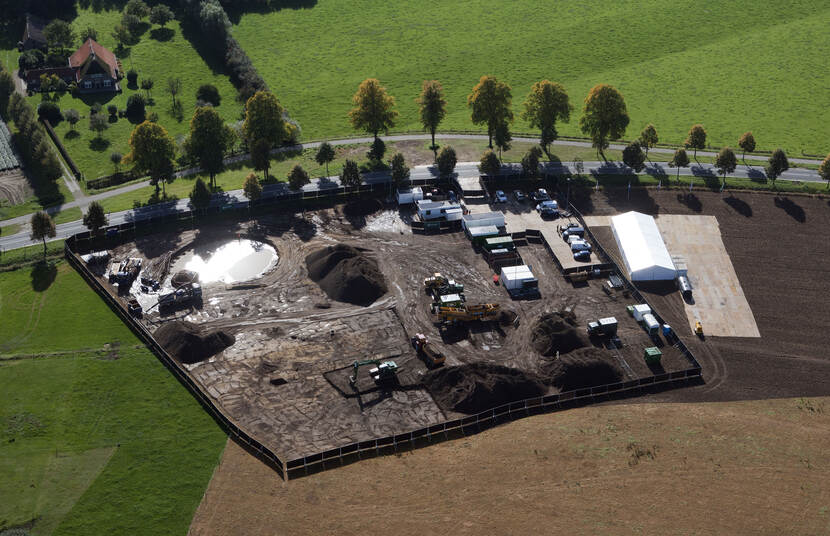Wreckage Recovery of Second World War Aircraft
Central government plans to work with municipalities until 2030 to recover human remains from crashed WWII aircraft. The government has budgeted € 15 million for this.
Recovery of human remains from aircraft wreckages
During the Second World War approximately 5,500 aircraft were lost over the Netherlands. The wreckages of some 400 aircraft may still contain human remains. In 30 to 50 of these wreckages, the likelihood of finding human remains is very high. These are the results of research by the Dutch Study Group Air War 1939-1945 (SGLO), which provides the basis for the National Programme for Aircraft Recovery (in Dutch). The programme began in September 2019 with the wreckage recovery of 2 aircraft.

Recovery of aircraft wreckage after 75 years
The National Programme for Aircraft Recovery began in 2019 because:
- in the years immediately after the war the priority was rebuilding the country;
- in 2019 and 2020 the Netherlands marked 75 years since liberation;
- research from 2019 showed there was a good chance human remains would be found in the wreckages of 30 to 50 aircraft. Surviving relatives would like to lay their loved ones to rest.
Under the Geneva Convention war graves are to be left undisturbed. This aircraft recovery programme, however, is an exception.
A maximum of 3 recoveries per year
Recovering the wreckage of an aircraft is costly in terms of money and manpower. Together with the relevant municipalities central government is able to recover up to 3 aircraft per year. When planning which aircraft to recover first, central government takes into consideration:
- the surviving relatives – priority is given to recovering aircraft containing the remains of people with many surviving relatives;
- the wishes of the municipalities;
- the likelihood that the recovery operation will be successful;
- the degree of difficulty of the aircraft recovery operation.
The teams are recovering the wreckage of British and German aircraft.
Where have aircraft wreckages been recovered?
Municipalities are responsible for recovering aircraft wreckages
Municipalities themselves must initiate the aircraft recoveries. This is laid down in the Municipalities Act (in Dutch). A municipality can recover the wreckage of an aircraft if there is a danger to the public, for example. Wreckages often contain undetonated explosives.
Under the national programme municipalities are reimbursed for these costs through the Municipalities Fund’s bomb disposal scheme (in Dutch). For example:
- to compensate the owner of the land;
- for on-site security during the recovery process;
- for organising a visitors day.
Documents
-
Nationaal programma berging vliegtuigwrakken van start
Met de berging van de RAF bommenwerper Short Stirling W7630 uit de Tweede Wereldoorlog in de gemeente Echt-Susteren is het ...
-
Kamerbrief nationaal programma berging vliegtuigwrakken met nog vermiste vliegers uit de Tweede Wereldoorlog
Minister Ollongren ( BZK) informeert de Tweede Kamer over de instelling van een nationaal programma berging vliegtuigwrakken met ...
-
Beantwoording Kamervragen over gemeentelijk beleid voor berging vliegtuigwrakken WOII
Minister Ollongren (BZK) beantwoordt vragen van de Tweede Kamer over de stand van zaken van het beleid van gemeenten bij ...